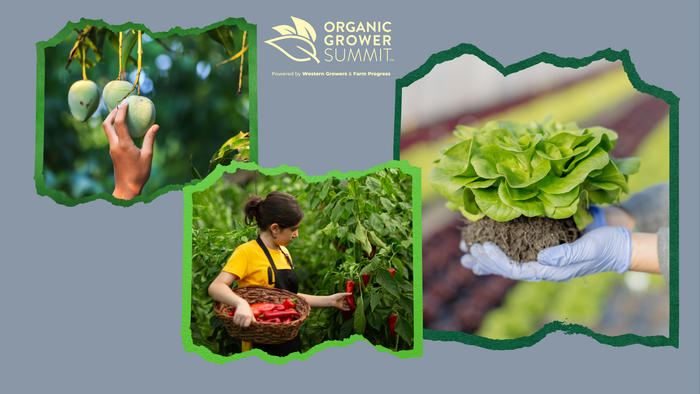From Ethiopia to Idaho, Maskal Teff grows a gluten-free opportunity
This staple of the East African diet is gaining popularity in the United States as consumers learn about its high protein, nutrition and fiber. Take a look.
July 2, 2024

Teff, an ancient grain the size of a poppy seed, has nourished people living in the Horn of Africa for over 5,000 years, so it’s no shocker that Ethiopia is the world’s leading producer of the nutrient-dense crop. The next-largest grower, however, is a bit of a head-scratcher: Idaho. At first glance, the Western state famous for its spuds may not bring Ethiopia to mind. Unless you’re Wayne Carlson.
The California-born biologist lived with local farmers in Ethiopia in the 1970s while working with the University of California on a program to fight schistosomiasis, a disease caused by freshwater parasites. While there, he learned how Ethiopian farmers preferred to grow—and eat—teff, even though they had access to other crops. Teff is the main ingredient in injera, the fermented, spongy flatbread Ethiopians eat with nearly every meal. Back in the U.S., Carlson’s next job was in Idaho. Gazing out over the Snake River Valley, he was fascinated by the similarities between the geology and climate there and in the East African Rift. In the late 1980s, when waves of Ethiopian immigrants came to the U.S. to escape famine and political instability. If he could convince Idaho farmers to grow teff, would there be a market for it among these immigrants?

Maskal Teff, tops $1 million in sales annually to distributors, stores, DTC and Ethiopian restaurants and bakeries.
“He got a Washington, D.C. [where many Ethiopian refugees landed] phone book and started randomly cold-calling Ethiopians,” says his son Royd Carlson. He found out that since they couldn’t buy teff in the states, they were using things like Aunt Jemima pancake mix to make their injera, which wasn’t a great substitute—or a nutritious one. Convinced the Ethiopians and Eritreans in the U.S. would indeed buy American-grown teff, he persuaded a couple Idaho farmers to try growing it. He processed the grain in a tiny mill in his basement and began selling directly to consumers.

Royd Carlson, marketing and agricultural manager, Maskal Teff
Thirty-five years later, the family’s company, Maskal Teff, tops $1 million in sales annually to distributors, stores, DTC and Ethiopian restaurants and bakeries. The company mainly sells teff flour and grain to the Ethiopian (over 340,000, according to the U.S. Census) and Eritrean population across the U.S., but converging trends position the grain for growth.
For the world’s smallest grain, teff packs a nutritional wallop. With a mild, nutty flavor, it’s packed with iron, magnesium, fiber, calcium and protein. It’s high in resistant starch, dietary fiber that releases energy slowly and keeps you feeling full. Superhuman Ethiopian marathoners call it the “secret ingredient” to their success. It’s been dubbed “the next quinoa.” (It has half the fat and double the iron of quinoa.) And teff is gluten free.
Teff sales got a bit of a boost during the ancient grain/whole grain renaissance, but Royd Carlson, the company’s marketing and agricultural manager, sees the biggest potential in the gluten-free market. Teff contains many of the nutrients lacking in gluten-free diets. To help grow its appeal, the company “has been working with recipe developers to find ways of using it that make sense to people from different walks of life,” he says. “It does best in denser baked goods, like pancakes, waffles and brownies… and as a porridge,” he says. The recipe for banana pancakes is one of the most popular on the website.
Royd Carlson is thrilled to offer the healthy, delicious product to a growing, diverse population seeking more nutritious grain. Trained as a physician, he left medicine to join the company in 2018 when sales sprouted. “I’m doing more here in this role for the health of the general population than I ever could do working in a hospital,” he says, noting how most of the people he saw in hospitals were there as a result of diet and exercise-related conditions.

Due to customer demand, Maskal Teff recently introduced Organic Ivory Teff Flour.
Convincing farmers to try growing a unique, African grain became easier after the first farmers’ success, Carlson says. Today, 20 growers throughout Idaho and the Western U.S. grow for Maskal Teff, which processes it in Boise. Drought-resistant teff has a better environmental footprint than most grains. It thrives in conditions that make most crops wither, making it a sustainable option as climate change continues to crank up the thermometer in a region often facing water scarcity. Recently, the company worked with a farmer to grow organic teff in response to consumer demand. It is available as Organic Ivory Teff Flour.
“A lot of farmers these days don't actually grow food,” says Carlson. “They grow stuff that's turned into ethanol or fed to the cows or whatever. So, a lot of our farmers are actually pretty excited about the fact that they can eat the crop that they're growing. That's a big deal for a lot of them.”
Once consumers try it and learn about its nutrient profile, “most people are excited about teff,” he says. The challenge is spreading awareness. “Only about 6% have ever heard of teff, let alone tried it, so there’s a lot of room for growth.”
Teff is literally the fastest-growing grain, requiring only 36 hours to sprout. And while the Carlsons have been producing the grain for over three decades, they believe demand for teff is finally picking up speed.
Read more about:
OrganicAbout the Author
You May Also Like



.jpg?width=700&auto=webp&quality=80&disable=upscale)
